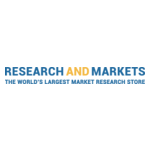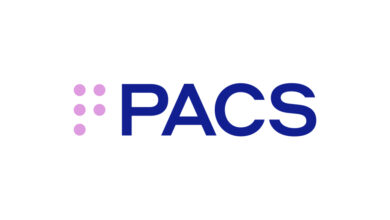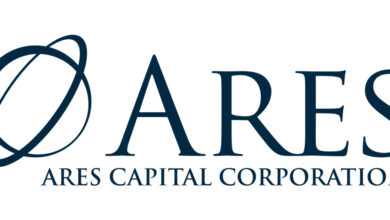Global Connected Device Market for Consumer, Enterprise, and Industrial IoT Devices 2023 to 2028: Players Include Google, Hewlett Packard Enterprise, Honeywell International, HTC and IBM – ResearchAndMarkets.com

DUBLIN–(BUSINESS WIRE)–The “Connected Device Market for Consumer, Enterprise, and Industrial IoT Devices by Use Case, Device Type, Applications, and Industry Verticals 2023 – 2028” report has been added to ResearchAndMarkets.com’s offering.
This report assesses the connected device market segment including consumer, enterprise, and industrial devices with associated connected device market sizing from 2023 to 2028.
It evaluates applications and solutions in each market segment for major industry verticals including agriculture, advertising and media, automobiles, energy management, healthcare, manufacturing, oil & gas, public safety, and telecommunications.
Companies Mentioned
- AB Electrolux
- ABB Ltd.
- Advantech Co. Ltd
- Aeris Communication Inc.
- Amplia Soluciones SL
- Apple Inc.
- ARM Limited
- Cumulocity GmBH
- Dell Technologies Inc.
- General Electric Co.
- Google Inc.
- Hewlett Packard Enterprise
- Honeywell International Inc.
- HTC Corporation
- IBM Corporation
- Koninklijke Philips N.V
- Lenovo Group Ltd.
- LG Electronics
- Microsoft Corporation
- Motorola Inc.
- Nokia Corporation
- Oracle Corporation
- Osterhout Design Group
- PTC Corporation
- Samsung Electronics Co Ltd.
- Schneider Electric
- Siemens AG
- Smith Micro Software Inc.
- Sony Corporation
- Technicolor
- Telit Communications PLC
- Vuzix Corporation
- Whirlpool Corporation
- Wind River Systems Inc.
- Xively
Select Report Findings:
- The global market for IoT connected devices in the government sector will reach $52.4 billion by 2028
- The global market for devices in support of energy management (air conditioners, temperature controllers, smart lighting, smart windows, etc.) will reach $8.9 billion 2028
- The global market for consumer appliances (TV, refrigerators, washing machines, dishwashers, microwaves, cooking appliances, coffee machines, etc.) will reach $4.1 billion by 2028
- The global market for devices in support of government security and monitoring equipment (CCTV, cameras, etc.) and structural health monitoring devices will reach $8.1 billion by 2028
- The global market for devices in support of hospital equipment (mobile furniture, Monitoring and diagnostic equipment, surgical tools, pathology and laboratory equipment, ambulance, etc.) will reach $5.2 billion by 2028
The number, type, and purpose of connected devices is rapidly expanding as the IoT evolves beyond the current state of limited applications, many of which remain isolated and purpose-built for a given use case, industry verticals, and companies.
Some of these applications will be enhanced through communication with a smart device, which is a connected device that benefits embedded intelligence. In contrast, an IoT Device need not be smart, and in fact, many are relatively unintelligent devices that are typically single-purpose and rely upon intelligence to be provided elsewhere for data processing, analytics, analysis, and dispersal of actionable information, typically via a cloud services model.
It is important to note that cloud services may be either centralized or distributed via Multi-access Edge Computing (MEC) infrastructure. MEC will also facilitate an entirely new class of low-power devices that rely upon MEC equipment for processing. Stated differently, some IoT devices will be very light-weight computationally speaking, relying upon edge computing nodes for most of their computation needs. However, AIoT is a dominant trend that the publisher of this report sees supporting connected devices via both distributed and centralized AI support for devices.
As AIoT causes networks and systems to become increasingly more cognitive in nature, connected devices that previously acted in a purely deterministic manner will leverage AI for decision-making, which may occur locally via edge computing and/or centrally via core cloud computing. As part of this evolution, devices will also increasingly engage in peer-to-peer communications including signaling and data exchange. This will create both an opportunity and a challenge connected device management as they will need to rely upon the AI-based cybersecurity solutions involving trust management.
Continued 5G standardization is anticipated to provide marked improvements for the connected device market. For example, there are provisions for hybrid devices that have 5G IoT market needs that range between mMTC and eMBB and URLLC. For example, some devices will require relatively high availability and latency, but not to the degree of some critical applications that require full URLLC.
Some of these same hybrid capability devices will also require some eMBB type functionality, such as relatively high reliability and latency for video. for example, the wearable technology market will have some devices in this category as some wearables will require relatively high bandwidth and battery life. In general, hybrid connected devices will be characterized as being more complex than mMTC devices, but less complex than eMBB or URLLC devices.
Introduction of these reduced-capability devices into the connected device market will have an impact on network operations including device identification, authentication and authorization as networks must ensure that these devices are only used for the intended use cases. This is because these hybrid-connected devices will have reduced capabilities such as fewer antennas, reduced control-channel monitoring, and other factors that may affect the QoS/QoE for various use cases.
Accordingly, IoT authorization and authentication procedures will adjust to these changing requirements as some use cases will be prohibitive for reduced-capability devices, but on the other hand, these same hybrid devices will be able to perform any function a typical mMTC device can do and more.
For more information about this report visit https://www.researchandmarkets.com/r/orb6h9-device?w=4
Contacts
ResearchAndMarkets.com
Laura Wood, Senior Press Manager
[email protected]
For E.S.T Office Hours Call 1-917-300-0470
For U.S./ CAN Toll Free Call 1-800-526-8630
For GMT Office Hours Call +353-1-416-8900




